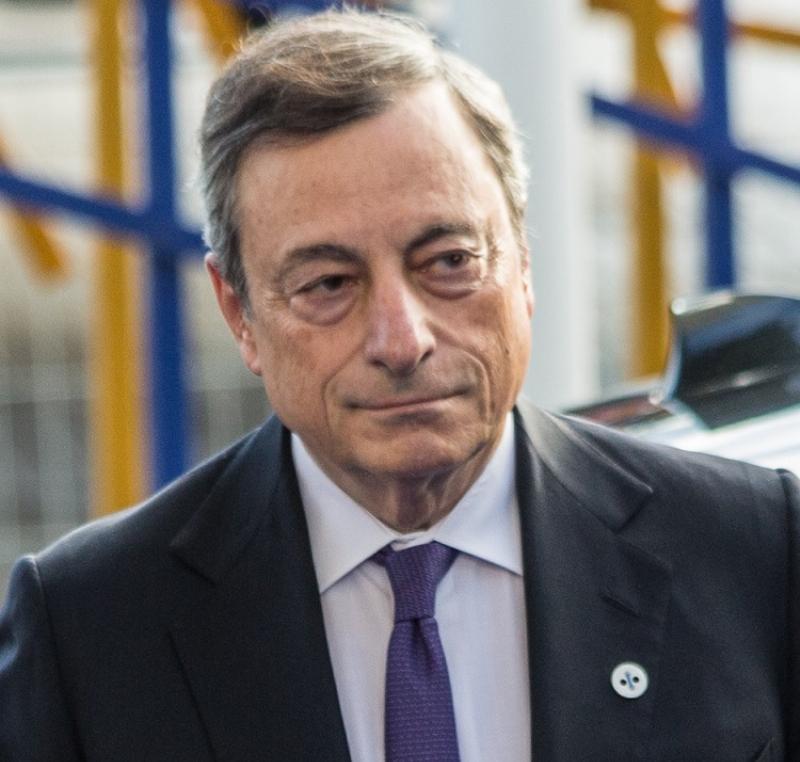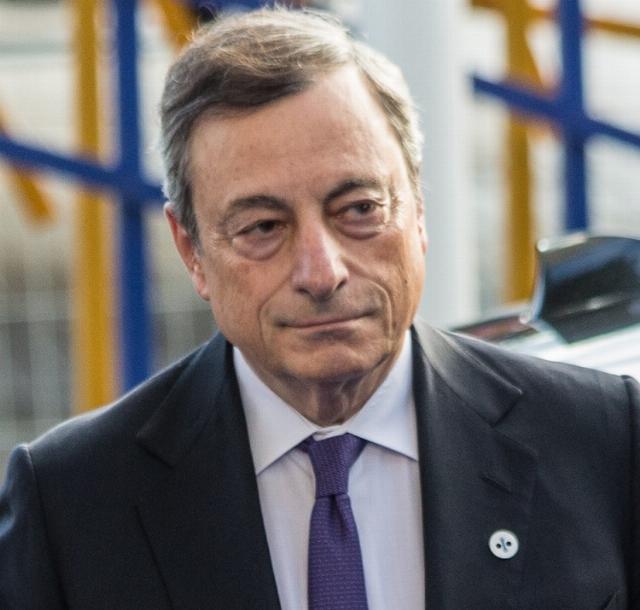


In response to the crisis of the “ecological transformation economy,” the EU is working on establishing its own war economy. Mario Draghi has now spoken up. For European taxpayers; this promises nothing good.
Taxpayers across the EU should be on alert: Draghi has once again commented on current policy, presenting one of his infamous reports spanning hundreds of pages. In it, the former President of the European Central Bank and Italy’s Prime Minister calls for a radical shift in EU defense policy.
Another Draghi report
Citing Politico, Draghi points out that a large share of EU member states’ defense spending so far has flowed to the U.S. He urged countries to prioritize the EU’s own defense industry when procuring weapons. Apparently, the massive technological gap between EU defense firms and U.S. competitors, as well as missing production capacities, play a subordinate role in Draghi’s calculations.
Will the EU soon use purchasing guarantees, subsidies, and possibly energy cost support for European arms producers to partially convert civilian industry into a centrally controlled war economy? Calls from the German military environment for a “Defense Acceleration Act” to strengthen industry and production suggest as much.
In June 2024, German Defense Minister Boris Pistorius (SPD) stressed in parliament the need to remain combat-ready until 2029, which also includes reinstating mandatory military service.
Facing the Russian threat
Hovering over all of this is the specter of Russian President Vladimir Putin, alleged to harbor invasion plans for the heart of Europe. In March, Bundeswehr Chief of Staff Carsten Breuer openly warned of a potential Russian attack on the Western alliance.
 No matter what challenges the Russian army faces in eastern Ukraine, the public is shown the specter of a Russian invasion to prepare European taxpayers for what Brussels is planning: funding an entirely new, artificial economy -- a fear-driven economy -- that, much like the green transformation economy, produces entirely detached from consumer needs.
No matter what challenges the Russian army faces in eastern Ukraine, the public is shown the specter of a Russian invasion to prepare European taxpayers for what Brussels is planning: funding an entirely new, artificial economy -- a fear-driven economy -- that, much like the green transformation economy, produces entirely detached from consumer needs.
At its core, this is about stabilizing the credit mechanism of a faltering Eurozone economy. Moreover, increasingly idle civilian industrial capacities are to be subordinated to this new purpose. This is nothing but static, technocratic thinking -- a political regime that has repeatedly failed in the past. Brussels has drawn no lessons.
Draghi pointed out that between June 2022 and June 2023, roughly 78% of the €75 billion EU defense spending was spent outside the EU, with 63% going to the U.S. Member states should prioritize the EU arms industry to strengthen defense and European autonomy, Draghi said.
Energy crisis ignored
Given Europe’s self-inflicted energy crisis, building a strategic EU arms industry seems absurd. How can the highly energy-intensive production of modern military hardware scale in the EU when industry already faces every red light? Capital flees the high energy costs created by the nuclear phase-out, the gas embargo on Russia, and the destructive regulatory framework of the green transformation.
Experience with the Brussels power apparatus shows that even the most grotesque ideas are kept alive with taxpayers’ money and massive debt -- there is no democratic or market-based control mechanism to stop invasive, ideology-driven EU policies before irreversible damage occurs.
Draghi, repeat offender
Draghi holds a special media status within the Brussels technocracy. Whenever a strategic reorientation with immense investment is planned, Draghi delivers the pseudo-economic justification in his reports. He is the typical Keynesian, seeing a demand shortfall in every economic crisis. Artificial credit programs are for politicians like him a universal solution for any economic irregularity.
Fifteen years ago, he fought the sovereign debt crisis with a tsunami of liquidity, which later manifested as high inflation. Bond purchases in the billions by Draghi’s ECB stabilized the market and brought interest rates in Southern European crisis countries from 10% down to 2.5%. His famous phrase “Whatever it takes” epitomizes not just the interventionist spirit of the central bank, but the EU’s broader policy, fused with monetary policy into a kind of Keynesian permanent alliance.
Looking at the political unity between EU Brussels and the ECB, one suspects they waited only for the right moment to create a new power construct. The ECB already executes Brussels’ policies in climate policy, in quasi-illegal state debt financing, and as a pioneer for the EU’s de facto sovereign fiscal path, including bond placements.
Draghi, in this sense, founded the interventionist ECB, whose policies prevented debt consolidation. From the start, Brussels worked to neutralize market-limiting forces. With the ECB, it found the perfect vehicle. This fusion of political entities shows that only informal contacts and shared ideology are needed to bypass treaties like Maastricht and the independence of the central bank.
Russia again
The full power of Brussels and the ECB is now required to establish the desired EU war economy. Draghi’s report explicitly cites the Russian threat. He also stressed that the EU must abandon the illusion that it can wield global influence through size alone. “This year will be remembered as the year this illusion evaporated,” he declared.
Draghi thus calls for an urgent economic and security rethink in Europe -- from higher defense and research investment to massive expansion of shared infrastructure. The industrial overhaul will redirect capital flows on an unprecedented scale -- away from the market, into a network of subsidies, artificial incentives, and dirigiste interventions. In sober terms, it is a large-scale impoverishment program.
Not to be ignored
Draghi’s report should not simply be dismissed as a consulting firm’s job creation scheme. Already in 2024, he briefly made headlines with another report calling for an €800 billion EU investment program -- entirely based on artificially created credit -- to overcome EU growth weakness, reduce dependence on China, and alleviate the raw material crisis.
Just a year later, Germany, with one of the lowest debt ratios in the EU, unveils a program of similar size. The parallels are no coincidence but part of a coordinated strategy. This is the blueprint for a Brussels industrial policy that aims to secure Europe’s future through joint debt issuance and massive market interventions.
In Brussels, they cling to the illusion of central planning. The industrial collapse is seen not as a warning but as a mandate to create a new “art economy.” Yet this project will starve halfway through, deepening the structural weaknesses of the Eurozone rather than curing them. In the end, only a heap of ruins remains.
Image: Estonian Presidency/Aron Urb
